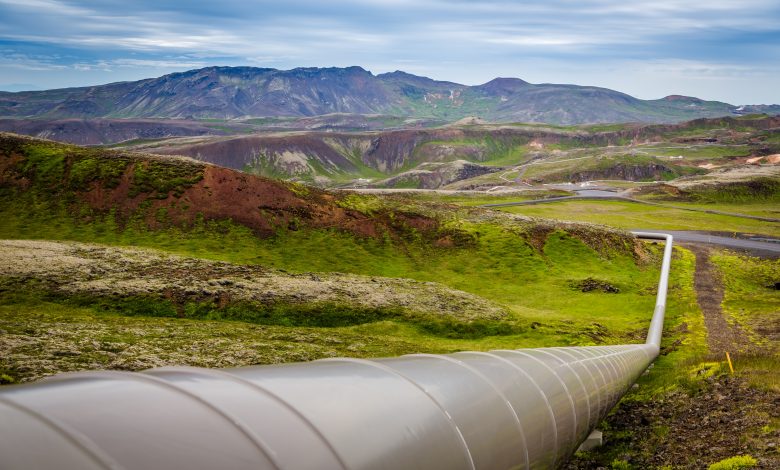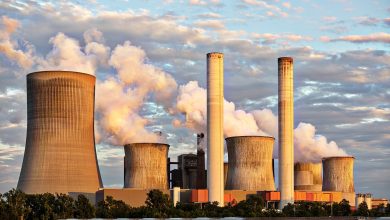Traveling Natural Gas

Natural gas goes through several stages and processes to become the energy that powers homes, businesses, and everything in between. The fossil fuel is found through exploration, which helps companies decide where to dig. It is then extracted from its underground reservoirs, then its time to prepare it before transportation.
Production
By the time natural gas is ready to be delivered to consumers, it is mostly methane. But underground, as we know, it is filled with a myriad of other components. Raw natural gas is sourced from oil wells, gas wells, and condensate wells. Natural gas from oil wells, called “associated gas”, can exist in two forms: free gas (that separated from oil) and dissolved gas (that dissolved in crude oil). The other two source types do not contain crude oil — or at most, a very little amount.
From the wellhead, natural gas is sent directly from the ground into the processing plants. Here, water vaper, non-hydrocarbons, and other elements are removed. The remaining elements are hydrocarbons (or natural gas liquids) and processed natural gas (or otherwise known as “dry, consumer-grade” or “pipeline-quality” natural gas). Sometimes, according to the Energy Information Administration, wellhead natural gas is sufficiently dry enough to meet pipeline transportation standards without the removal of the natural gas liquids.
The elements that are removed are not all waste. These include ethane, propane, butane, and pentanes, and can be sold off for separate processing.

Transportation and Storage
Transportation and storage are closely linked on the chain gang of fossil fuel energy, as natural gas may not be able to be directly fed in the home/facility its meant to power.
There are three types of pipelines along the transport journey. There is the gathering system, the interstate/intrastate pipeline, and the distribution line. The pipeline network in the United States spans far and wide; all coming in different sizes. It takes natural gas from producing regions and takes it to “those areas with high natural gas requirements,” according to the Natural Gas Supply Association.
Natural gas travels through this network at a pressure between 200 and 1,500 pounds per square inch. Mainline pipes are the principle transmission pipeline in most systems. These are usually between 16 inches and two feet in diameter. Lateral pipelines, which move natural gas to mainline pipes, are generally between six and 16 inches in diameter. The actual pipeline, the major travel line, has to be built by standards set by the American Petroleum Institute.
Along the way, natural gas encounters compressor stations, meter stations, valves, and other systems. These steps help to ensure the movement and safety of natural gas along its route to distribution areas.
Natural gas travels under high pressure. Compressor stations ensure the flow of the pipeline. Along the course, between 40 and 100 miles, natural gas goes through a motorized mechanism (turbine, motor, or engine) and is compressed to maintain pressure. Related to this process are the metering stations. These facilities help utility companies monitor natural gas in their pipes as the stations track natural gas flow.

Distribution
The final step in the life of natural gas is being distributed to customers. (Some major facilities, such as commercial and industrial consumers, take natural gas directly from interstate/intrastate pipeline). Local distribution companies, generally, deliver natural gas to consumers from points along the interstate/intrastate pipelines.
At these hubs, utility companies use pipe far less wide in diameter to distribute natural gas. These centers are called “citygates”, and are important in utility companies claiming natural gas for their customers and setting prices in urban areas. When natural gas reaches this area, it is typically depressurized and filtered again to ensure “low moisture and particulate content” (NGSA). That rotten-egg smell associated with gas, mercaptan, is also added here by the utility companies. This component is added for utility users to be able to identify natural gas leaks easier. Natural gas is odorless and colorless.
Distributing natural gas is similar to transporting it far distances, except the distance-traveled, pipe size, pressure, and volumes are largely decreased. The pressure used to move natural gas through the distribution network is 500 times fewer than the transportation stage. In close ranges, natural gas moves through pipes at about three pounds per square inch. From these small-size pipes, natural gas is fed to consumers.
Sources
Energy Information Administration. “Natural gas explained.”
https://www.eia.gov/energyexplained/natural-gas/
Natural Gas Supply Association. “Natural gas” Naturalgas.org
http://naturalgas.org/naturalgas/



